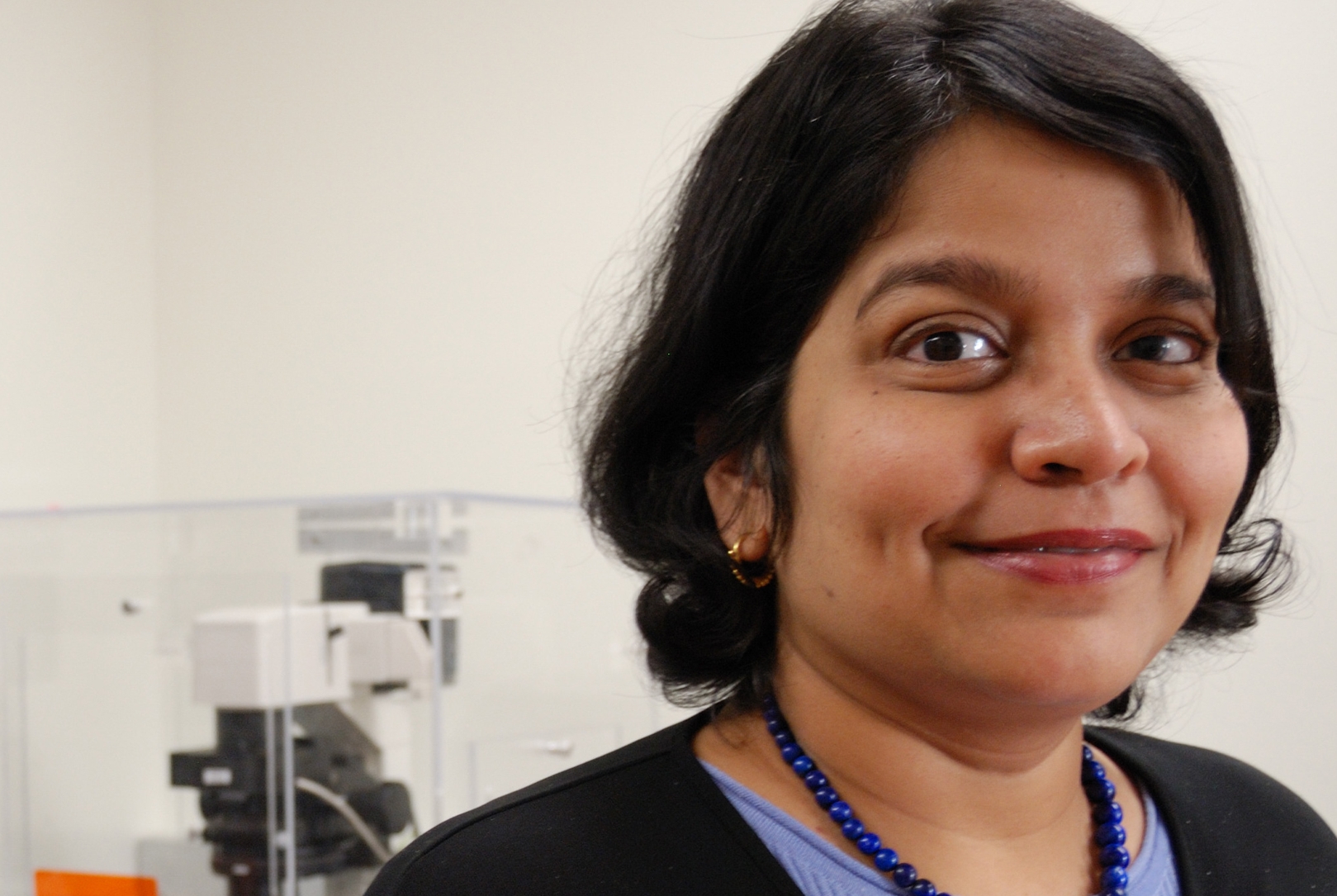College of Engineering team to design and study liver mimics

Virginia Tech College of Engineering researchers will use more than $1 million in grant funding to study engineered tissues that mimic the liver, one of the human body's most complex organs.
Padma Rajagopalan, an assistant professor in the Department of Chemical Engineering, is designing liver mimics that eventually could form the basis for extracorporeal liver-assist devices. She is the principal investigator on three recent federal grants totaling $1,087,091 related to liver tissue engineering.
The liver plays a major role in the body’s defense mechanisms and performs a multitude of functions including metabolism and detoxification. The deterioration in any one of the liver’s functions can cause life-threatening health problems or death. Liver transplants are extremely expensive, may not be appropriate for patients at a high risk for surgery, or may simply not be possible due to a lack of suitable donors.
The primary research goal of these projects is to assemble 3-D cellular structures that mimic the liver using the major cell types found in the liver. Rajagopalan’s interest in this research began when she conducted studies on liver tissue engineering while she was a research associate at Massachusetts General Hospital, Harvard Medical School, from 2002 to 2004.
“Liver cells can regenerate inside the body, but lose this ability once removed,” said Rajagopalan. “Therefore, researchers need to find a way to sustain cells in vitro. A critical aspect is capturing the precise spacing between different cell types in the liver.” At Harvard Medical School, Rajagopalan developed a novel method that uses biocompatible, nanoscale polyelectrolyte scaffolds to replicate the spatial configuration within the liver.
A $419,230 grant from the National Institute of Health is for the project “3-D In Vitro Liver Sinusoids: Design and Detoxification Studies.” This project will focus upon the detoxification pathways in 3-D liver mimics.
A $365,000 grant from the National Science Foundation is for the project “Self-Assembled Polymer Scaffolds for Liver Mimics.” Richey Davis, a professor of chemical engineering, will collaborate with Rajagopalan on studying the mechanical properties of these scaffolds.
A second award, totaling $302,861, from the National Science Foundation funds “Transcriptional Signatures in 3D Liver Mimetic Architectures” research. Through a combination of experimental and computational approaches, this project will study cell-cell communications in the liver mimics. T. M. Murali, an associate professor in the department of computer science, will develop algorithms to unravel gene networks activated within cells in the liver mimics. Rajagopalan and Murali collected the preliminary data for this project through seed funding obtained in 2007 from the Institute of Critical Technology and Applied Sciences.
Rajagopalan and her collaborators hope that designing liver mimics and studying them at the molecular and cellular levels will bring about a much improved understanding of the organ’s structure, and thereafter, to potential breakthroughs in the design of tissue engineered livers. “Information gleaned from this project will provide a sound theoretical basis for the design of the next generation of tissue-engineered livers,” said Rajagopalan.
These projects also include outreach to middle school students and to ethnically diverse female high school students. Through summer camps sponsored by Virginia Tech’s Center for Enhancement in Engineering Diversity, Rajagopalan and her team will introduce students to the notion of interdisciplinary research and demonstrate how collaborative advances in engineering and computer science can have a direct impact on human health.
Rajagopalan received her bachelor’s of science and master’s degrees from the Indian Institute of Technology, Kharagpur, and her Ph.D. from Brown University. Davis earned his bachelor of science in chemical engineering from Clemson University in 1977 and his Ph.D. from Princeton University in 1983. Murali received his computer science bachelor’s degree from the Indian Institute of Technology, Madras, and his computer science and doctoral degrees from Brown University.



.jpg.transform/m-medium/image.jpg)
